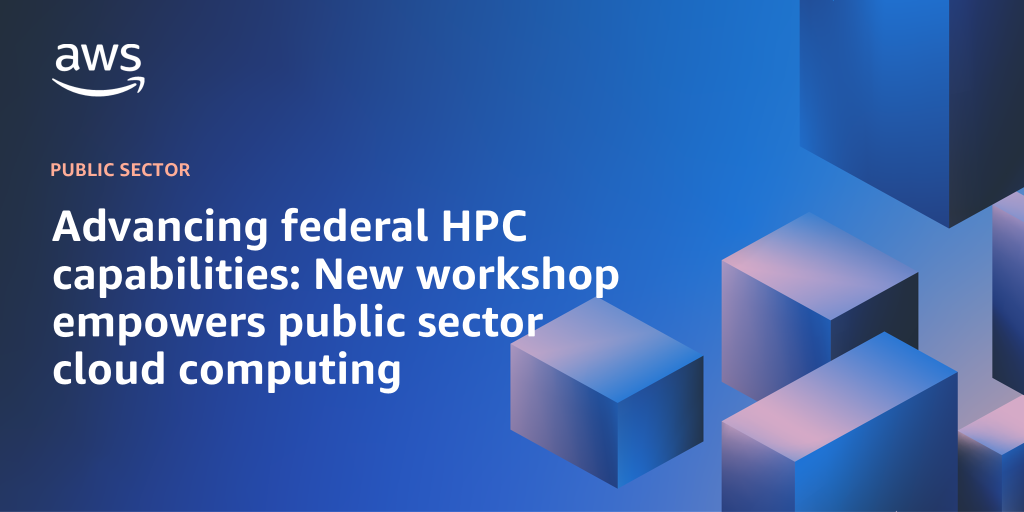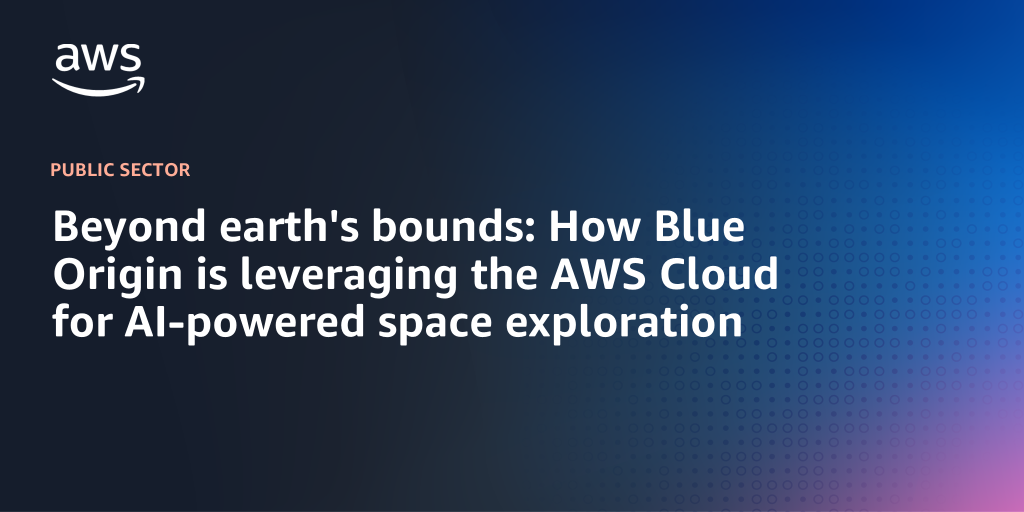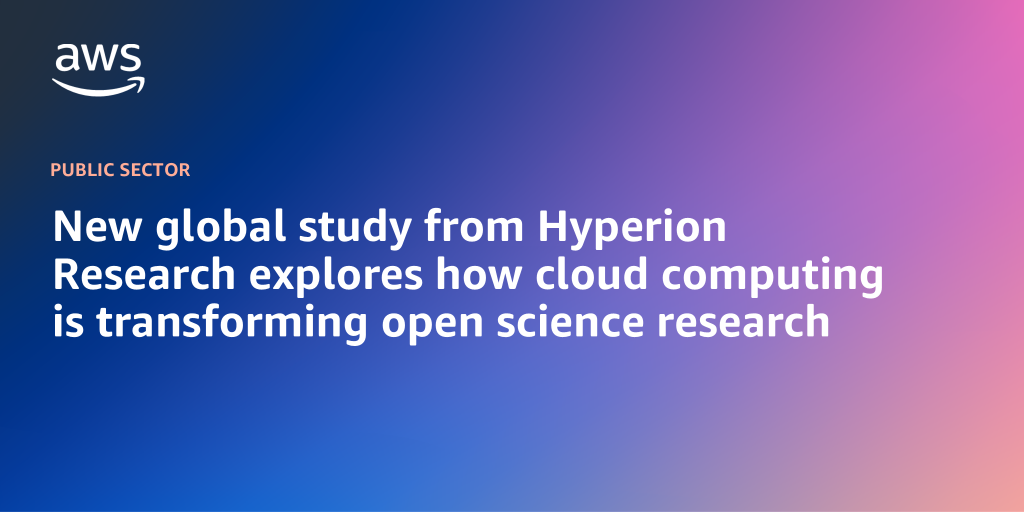AWS Public Sector Blog
Tag: high performance computing
Advancing federal HPC capabilities: New workshop empowers public sector cloud computing
The use of high performance computing (HPC) in federal agencies is evolving rapidly, and AWS is offering an innovative new workshop designed specifically for public sector requirements. The AWS Department of Defense (DoD) HPC Center of Excellence (CoE) has launched the HPC for Public Sector workshop, a comprehensive training program that addresses the unique challenges faced by federal organizations in deploying HPC workloads to the cloud.
Beyond earth’s bounds: How Blue Origin is leveraging the AWS Cloud for AI-powered space exploration
Blue Origin is transforming space exploration with a mission to make space access routine, reliable, and cost-effective. In January 2025, the company achieved a historic milestone with its first orbital spaceflight—the New Glenn 1 (NG-1) rocket launch—powered by AWS GovCoud (US) and generative AI.
New global study from Hyperion Research explores how cloud computing is transforming open science research
In an era where scientific discovery transcends borders, cloud computing is helping advance how researchers collaborate and innovate across the globe. Now available for download, The Value of Utilizing Cloud Service Providers for Open Science Research report—produced by Hyperion Research and sponsored by AWS— explores how and why researchers use cloud to accelerate open science research. Read this post to learn more.
Research at the speed of discovery: AWS cloud bursting eliminates computational bottlenecks
AWS has leveraged the expertise of Pariveda Solutions, an AWS Premier Consulting Partner, to develop a flexible high performance computing (HPC) bursting solution that dynamically extends your on-premises infrastructure into the cloud. This approach provides stable core HPC infrastructure with the flexibility to handle peak demand without massive capital investments.
Why government health agencies worldwide are selecting AWS to transform patient care
Healthcare systems around the world are facing unprecedented challenges, from addressing chronic conditions to supporting aging populations and addressing emerging health threats, and it has become unmistakably clear that technology is no longer just a support function—it’s a force-multiplier that can transform health outcomes. At AWS, we’ve witnessed a remarkable shift as health agencies worldwide increasingly choose cloud computing to drive innovation, enhance research capabilities, and ultimately, improve patient outcomes.
How AWS can help mission-focused organizations comply with the White House National Security Memorandum on AI
On October 24, 2024, the White House released a National Security Memorandum (NSM) on Artificial Intelligence (AI), which focuses on ensuring US leadership in developing advanced AI technologies. Amazon Web Services (AWS) is uniquely positioned to address the critical needs of the defense and national security customers in advancing their AI capabilities. Our comprehensive suite of AI and high performance computing (HPC) capabilities offers flexible and robust solutions to meet the NSM’s goals and empower national security missions.
University of British Columbia Cloud Innovation Centre: Governing an innovation hub using AWS management services
In January 2020, Amazon Web Services (AWS) inaugurated a Cloud Innovation Centre (CIC) at the University of British Columbia (UBC). The CIC uses emerging technologies to solve real-world problems and has produced more than 50 prototypes in sectors like healthcare, education, and research. The Centre’s work has involved 300-plus AWS accounts across various groups, including external collaborators, UBC staff, students, and researchers. This post discusses the management of AWS in higher education institutions, emphasizing governance to securely foster innovation without compromising security and detailing policies and responsibilities for managing AWS accounts across projects and research.
5 best practices for accelerating research computing with AWS
Amazon Web Services (AWS) works with higher education institutions, research labs, and researchers around the world to offer cost-effective, scalable, and secure compute, storage, and database capabilities to accelerate time to science. In our work with research leaders and stakeholders, users often ask us about best practices for leveraging cloud for research. In this post, we dive into five common questions we field from research leaders as they build the academic research innovation centers of the future.
Emory University supports AI.Humanity initiative with high-performance computing on AWS
In 2022, Emory launched the AI.Humanity initiative to explore the societal impacts of artificial intelligence (AI) and influence its future development to serve humanity. Emory aims to be a leading advocate for ethical use of AI and a top destination for students and faculty seeking to understand and apply its transformative technologies. Read this blog post to learn how Emory uses Amazon Web Services (AWS) to support the computing needs of AI.Humanity.
Accelerating economic research at UBC with high performance computing using RONIN and AWS
Dr. Kevin Leyton-Brown and Neil Newman are computer scientists at the University of British Columbia (UBC) working at the intersection of artificial intelligence (AI) and microeconomic theory. Their research demands large-scale, high-performance computing, in episodic bursts, to run parallel simulations of complex auctions. When Leyton-Brown and Newman began research into the computationally complex auction theory behind the 2016 United States wireless spectrum auction, their ML models required significantly more computing power than their on-premises infrastructure could provide. The UBC team turned to RONIN, an AWS Partner, and the virtually unlimited infrastructure of the AWS Cloud, to accelerate their time to answers and new discoveries.









